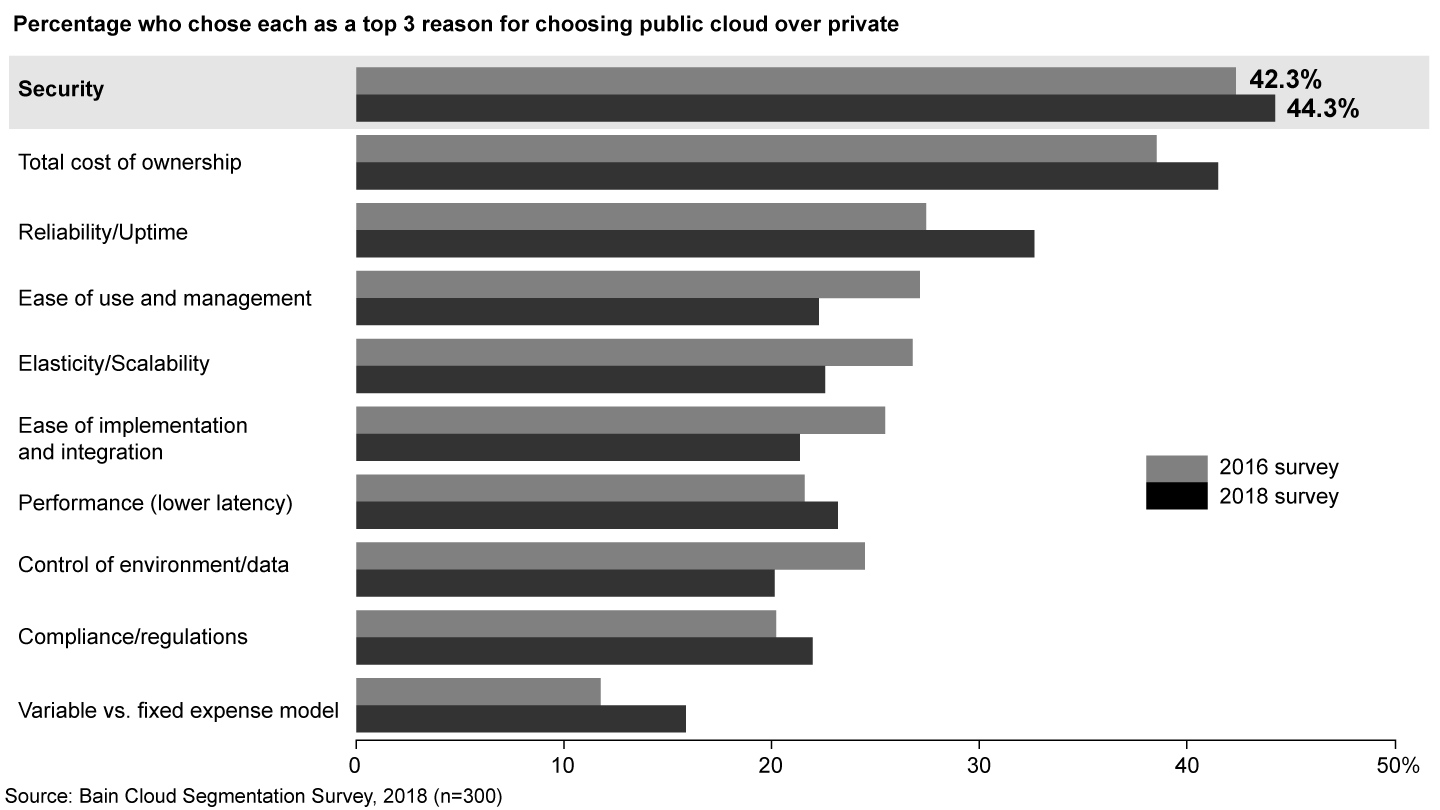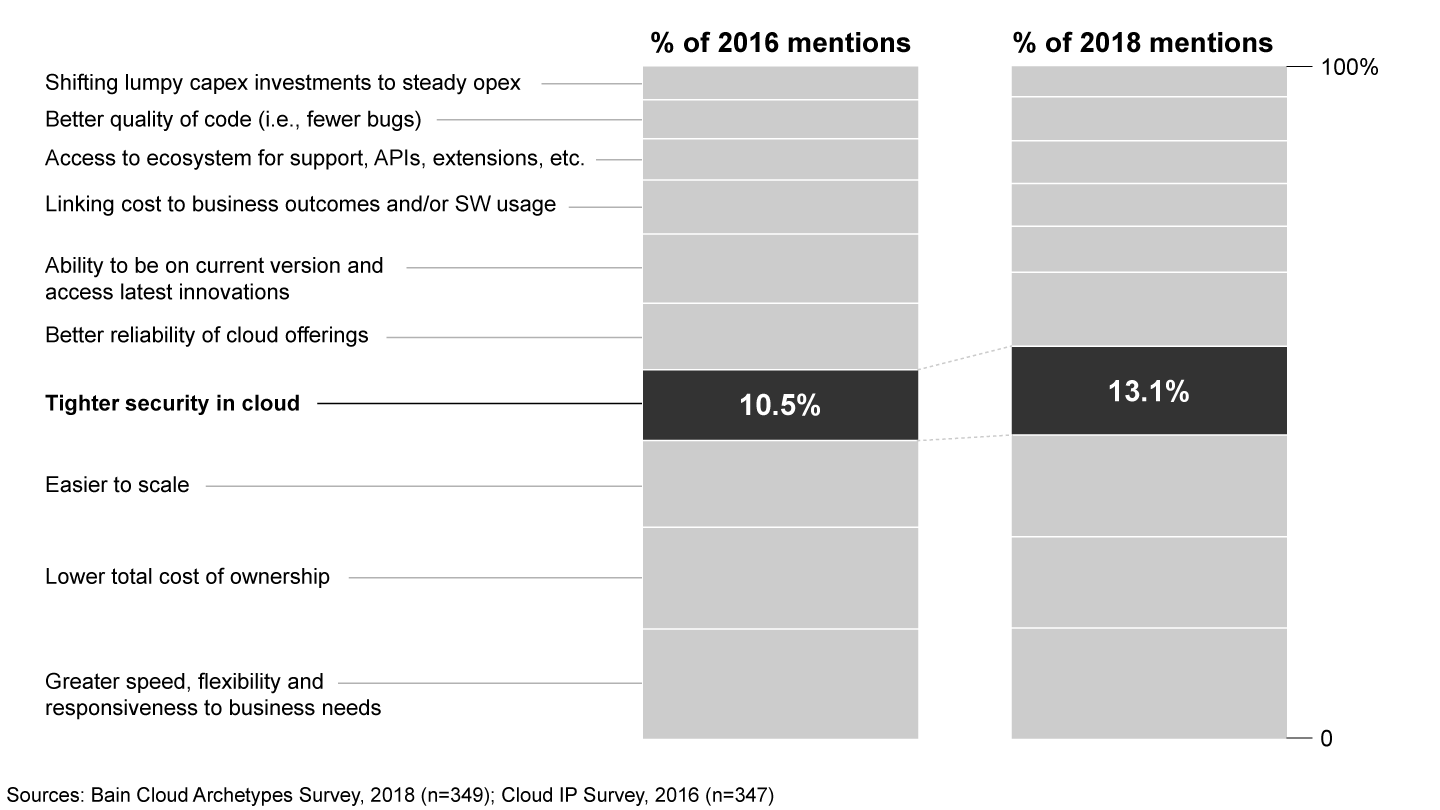記事

This is the third in a series of posts on the enterprise cloud market—its economics, customer segments and the opportunities for technology providers.
As recently as a few years ago, most CIOs and senior technology executives viewed public cloud as a limited solution, appropriate only for less critical and less sensitive workloads.
Today, public cloud is winning the race, with worldwide revenues expected to exceed $275 billion by 2021, while private cloud draws in at most $75 billion, depending on the market definition. Public cloud’s momentum doesn’t necessarily result from everyone falling in love with it. Our research finds that some enterprise customers would prefer a private solution, but embrace public because it’s less expensive, more feature-rich and easier to integrate.
Some private cloud solutions cost more than executives can justify. In many cases a private solution is just too difficult to integrate or manage. Public cloud, by comparison, offloads much of the management burden to the cloud service provider, freeing up resources in the enterprise to focus on the most challenging or sensitive aspects of technology.
Given how far ahead public cloud is, the game for private cloud providers is now about winning with hybrid solutions. The market has moved past the point where vendors can approach customers, even those in highly regulated industries, with an all-private value proposition. Instead, vendors should be tailoring their offers and go-to-market models to emphasize the ease of integration with public cloud services.
Hybrid solutions have become more attractive as public cloud has come to be seen as more reliable, less expensive and in some cases more secure than competitive private cloud solutions (see Figure 1). Further development of sophisticated hybrid solutions is likely to spur some reluctant customers to reconsider cloud solutions. Our research found that the most safety-conscious customers fell short of their ambitions to double their use of the cloud, because private cloud wasn’t delivering in a way that they could afford (see our recent post “Revisiting the Five Faces of the Cloud”).


The changing views of public cloud result in part from persistent messaging by the large cloud service providers, who appear to be winning the battle of perception on public cloud’s capabilities. But the shift is also grounded in the experience of customers who have witnessed substantial improvements in public cloud’s capabilities. Customers in our survey said that they believe public cloud has come further faster, gaining more ground in almost every aspect since 2016 compared with private cloud solutions (see Figure 2).


Interestingly, security appears to be both a concern and a motivation for cloud migration. Some executives believe that public cloud providers can do a better job protecting their IT environment against breaches, hacks, and general data privacy and security failures than they could do on their own, running on-premise software (see Figure 3).


But if customers are impressed with the gains that cloud is making, some serious disappointments remain. Cost is the largest disappointment, with many customers saying they didn’t realize the gains expected. Disappointment with compliance and regulatory issues increased, with nearly 50% more executives citing these challenges in 2018 compared with 2016. Satisfaction with security and reliability appears to be on the rise, with fewer executives saying they were disappointed in these aspects of their cloud deployments in 2018 compared with two years earlier.
In an upcoming post, we’ll look at the differences in deployment levels between Europe and North America.
Mark Brinda and Kate Woolley are members of Bain & Company’s Global Technology practice. Both are based in New York.

Mastering the Cloud Economy
Technology providers selling cloud software, services and hardware can strengthen their value proposition by developing a better understanding of cloud economics, customer preferences, and the impact of the cloud’s ascendance in legacy and disruptive technologies.